starfox14now
Power Member
‘Pentiment’ Anniversary Interview: Josh Sawyer on His Influences, Going From Playing D&D to Designing, a Potential ‘Pillars of Eternity 3’, RPG Mechanics, and More
I loved Obsidian Entertainment’s Pentiment last year, and with its upcoming anniversary, I figured it was a great time to chat with Josh Sawyer (Studio Design Director at Obsidian) about the game, RPG mechanics, his career, the games he is playing now, and a lot more including a few non-gaming topics. This is one of the longer interviews we’ve done. Usually, I’d want to split a feature like this into two parts, but I’m sure fans of Josh Sawyer’s work like reading a lot anyway. This interview was conducted on a video call. It was then transcribed and edited for brevity in the case of some portions.
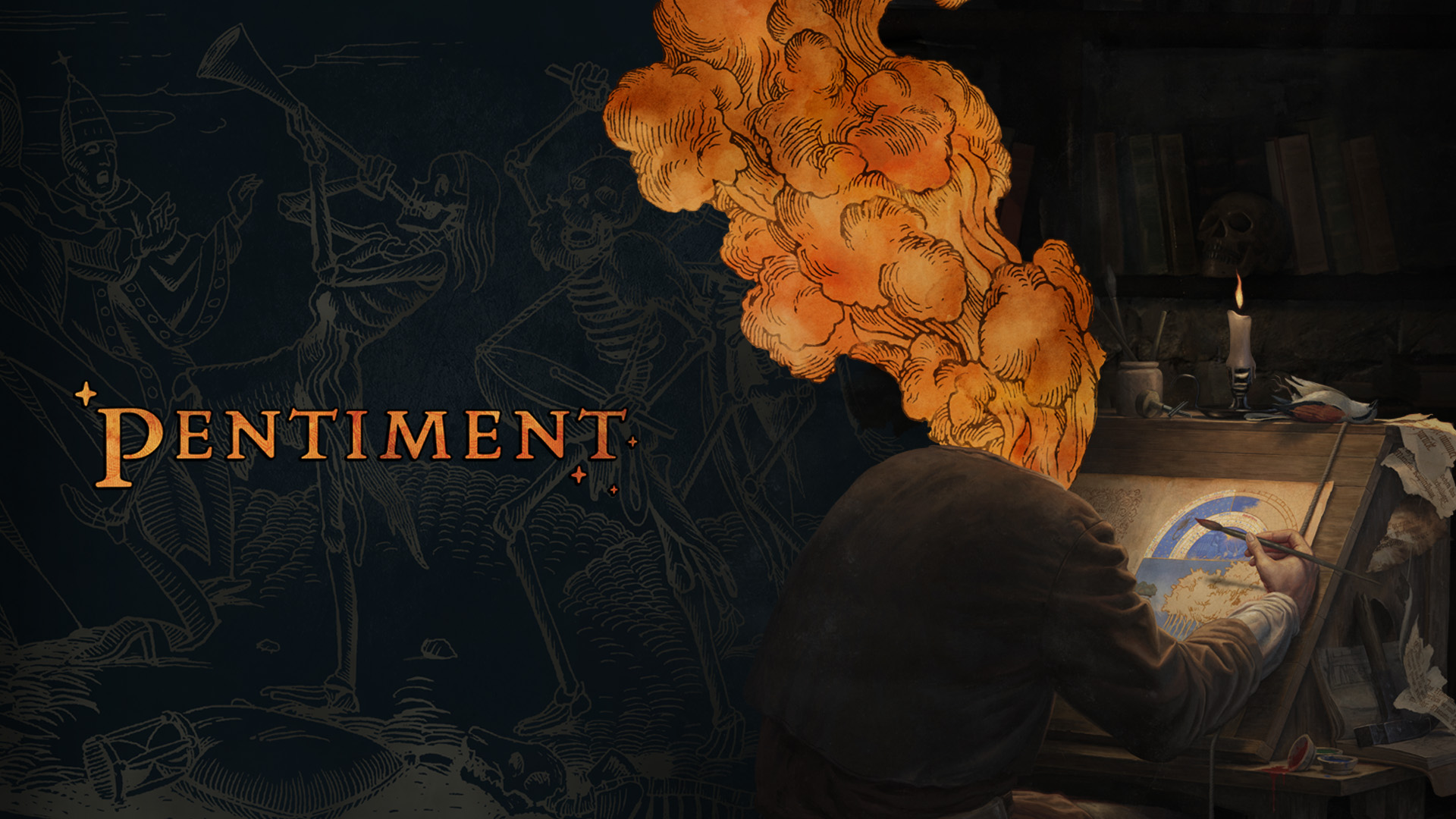
TouchArcade (TA): For those who don’t know you, tell us a little bit about yourself, and your current position at Obsidian Entertainment.
Josh Sawyer (JS): My name is Josh Sawyer. I started in the video game industry in 1999 at Black Isle Studios. I originally started as a website designer. The first game I worked on was Planescape Torment, designing the website for that, and then Icewind Dale and Baldur’s Gate 2.
I then became a designer on Icewind Dale, and I worked at Black Isle until it closed or just before it closed. I then went to Midway for a couple of years that didn’t really work out. Then I went to Obsidian. In 2005, I worked on Neverwinter Nights 2, and then after that I directed Fallout: New Vegas, Pillars of Eternity 1 and 2, and Pentiment. I’ve been the studio design director at the studio for five years.

TA: So what exactly is a studio design director?
JS: It varies from studio to studio. Some studios don’t have a studio design director. At Obsidian, it’s kind of like the most, not necessarily the most senior, but it’s kind of like the advisor to all the other designers at the studio, and the person who gives advice and feedback on all things related to design. So it’s not like I’m actually in charge of the design at the studio, but I’m in charge of giving feedback and general direction.
The individual directors and developers are free to ignore that if they want to, but my job is to sort of try to set the standards for the studio in design.
TA: This isn’t the same as when a publisher gives feedback to the developers? I think you mentioned in another interview I was watching recently where publishers usually don’t have the feedback which matches what the players would want from a game. So this is different to that right?
JS: I think it’s usually informed specifically by my experience at Obsidian. I’ve only really worked on role playing games or things adjacent to role playing games for my entire career, so I don’t always have the right answer, but I think I have a lot of experience working on these games.
I have a lot of experience seeing how players react to feedback, so I try to just approach from the perspective of what does our audience kind of expect? Not that we always have to do what they expect, but what is it going to produce a good experience for them based on their expectations? Sometimes that means defying their expectations. But we have to make sure that we’re making that choice consciously and not kind of like accidentally or that we’re, you know, basically just being aware of what we’re doing.

TA: Before you were at Black Isle, you mentioned that your dad was a sculptor, and you wanted to be an illustrator at some point. So how did you go into web development back then? What happened in between those two things?
JS: It’s a really weird path. My dad is a sculptor, and he did a little bit of illustration. I have never been good at sculpting. When I was young for my age, I was good at illustration. When I got older, color blindness made it very difficult. I think as a lot of truly like children move from drawing with pen and pencil into trying to paint, and for me painting was quite difficult, especially skin tones because of color blindness. I had also been doing a lot of music in high school, so then I went to school for music and theater and, that didn’t work out, so I shifted over to history.
But through all of that, I had been interested in computers, and I had been interested in graphic design and learning things like Photoshop. I was in college in the mid 90s, and that’s when personal website development really took off, and I started making my own websites and learning, learning more about Photoshop, learning to code things in HTML or use markup basically and JavaScript and yeah, and I taught myself flash animation just because I wanted to do goofy things on my website. Then that’s what I did for kind of odd jobs in college. I would do freelance website design and that’s how I got my job at Black Isle.
I graduated with a history degree. I didn’t know what I was gonna do with it. But I had been doing professional website design, and when I applied it Black Isle really wanted someone who knew how to use flash animation because that was kind of cutting edge at the time, and I remember very distinctly. They said that of the 62 applicants for the position, I was one of only three that actually knew Flash, so I was just really at the right place at the right time. Because Black Isle worked on role playing games and games, and I really like I had played a ton of D&D, especially in college, I played way, way, way too much D&D. So Icewind Dale was a good project for me to kind of move over onto, although it took a lot of convincing for them to give me a shot, but it worked out.
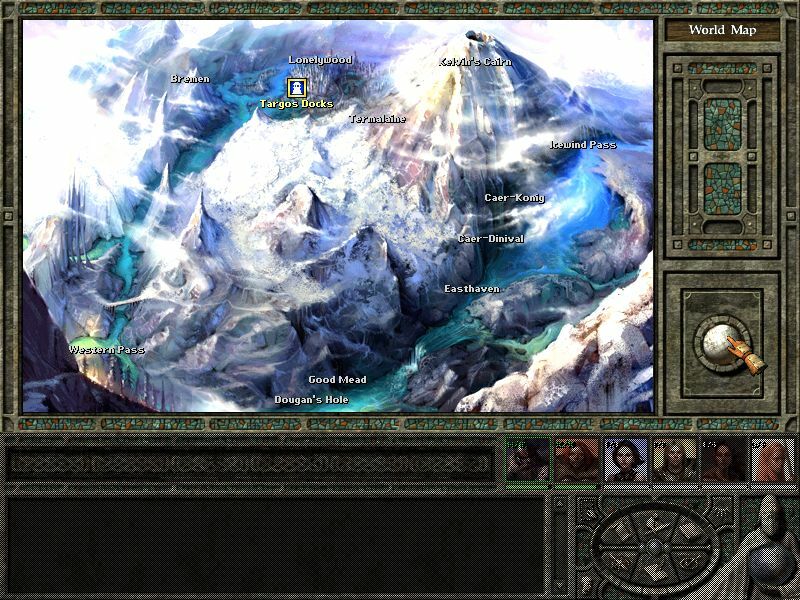
TA: So you mentioned in an interview with PC Gamer that you’ve been playing D&D stuff pretty regularly since 1985. I know you’ve spoken quite a bit about Fallout when you wanted to do a Fallout game at the time, but how did it feel going from playing D&D so much to becoming such an important part of D&D history now?
JS: It’s weird. I thought it was fantastic. I was so thrilled to work on a D&D game. I’ve said this before, but I didn’t really understand what game devs did, or that there were designers, or like how it worked. It was just kind of a black box from the outside, but then as I started to understand the development process, I thought I could do a good job at it.
I used all my D&D knowledge. Maybe too much because, I think on Icewind Dale and Icewind Dale 2 my attitude is very hardcore. All the fights were sort of balanced for like extreme min-maxers and people that were super super into D&D, but it was really fantastic. Like I’ve said when I got into the industry that: I’d love to work on a Fallout game, I’d love to work on a D&D game, and I’d love to work on a historical game.
It took like 20 years basically to get to the last one, but I got to work on a D&D game right away, and it’s crazy because I know there are tons of people who really never get to work on the games that they want to, or it’s a struggle for them to work on the games that they want to. I consider myself sort of triply lucky that I had the opportunity I had not only to get into a game industry job, but then become a designer, and then become a designer on a D&D game as my first game. So super, super fortunate.
TA: I discovered your work through Pillars of Eternity because it was during this big CRPG revival and it even saw a physical release and hit consoles. A lot of people kept praising Fallout: New Vegas, but I haven’t played much of it. When I played Pillars of Eternity, I had that Danny Devito “I get it now" moment. In the same PC Gamer interview, you said that because of how those games were funded on Kickstarter versus self funded, they were designed with some compromises. I wanted to know if Pentiment finally allowed you to make everything you wanted without any compromise exactly how you wanted it. Is that accurate?
JS: You know, time is always a factor and, I am making a game for another company. If you gave me more time, I’d certainly do more stuff with Pentiment. But, I feel like I got a fair amount of time on Pentiment and extensions. Other than that, though, everything creatively was fully under my control. I don’t believe I compromised on any of that stuff.
It was the game that I wanted to make, made the way that I wanted to, and I was conscious of specific choices like no VO which some people are not going to like. That’s ok. There were things that I thought were a good concession. Enabling easy read fonts. Some people just have difficulty with the super old fashioned things. So yeah, turn it on. Let him do that, but everything else was mostly just, this is what I wanted to do and, I don’t really consider anything that I did to be a concession or something I regret.
It’s all pretty much done the way I wanted to do. If people said or if Microsoft said here’s another year, sure, there’s other stuff I do. That’d be cool. But other than that, I feel very happy with it.

TA: Since Pentiment launched, you’ve done so many interviews and you’ve spoken about the books that inspired the game and the books that inspired you. Would you say that the Nuremberg Chronicle and Name of the Rose were the biggest inspirations for it?
JS: Yeah, visually, Nuremberg Chronicle is what Hannah pulled a lot of reference from, especially for the woodcuts. We also looked at a number of, especially Flemish, illuminated manuscripts from the late 15th century.
The Très Riches Heures du Duc de Berry was one of the big inspirations that we looked at, but other than that, in terms of the fiction, yeah, it was certainly The Name of the Rose. Both for the monastic sort of focus, and also for the nature of the mystery, and having to do with books and knowledge and forbidden knowledge and things like that. Then after that it was a lot of historical stuff which, you know, I’ve talked about at length before.
TA: So Pentiment is nearing its 1 year anniversary. Microsoft’s smaller games, which I’ve been a huge fan of, like Hi-Fi Rush, got major updates. Pentiment hasn’t gotten any major recent update, but I was wondering if there was anything planned which you can reveal. Maybe a physical release or an art book alongside any anniversary update?
JS: Anything that hasn’t been announced, I can’t announce, but I will say that you know, so the vinyl came out and immediately sold out. There’s another pressing of that happening.
(I mentioned how it sold out while I was asleep.)
I kind of predicted that it would sell a lot more than was initially predicted. So we are doing another run of that. I don’t know what the quantity is or when it’s coming in, but that is happening.
We know that a lot of people want a physical release. We know that a lot of people want an art book. A lot of people have requested that. We’ve talked about it, but there’s nothing to announce yet.

TA: Pentiment was developed using Obsidian Entertainment’s OEI tools. Tell us a little bit about how those have evolved over time through the many projects you worked on.
JS: Yeah, that’s a big question. So the engine that we used was Unity, but for all the writing we used OEI tools. There’s a lot of other game data that we developed in OEI tools as well.
So OEI tools started in 2006. We were starting to work on what would become the Aliens project, and I had an idea because I had worked with biowares tools, dialogue tools, specifically in a flat list which is the Infinity Engine style, and then the Cascading Tree style where you kind of just have you expand the tree and it kind of branches down branches down, and what we found in working especially on Neverwinter Nights 2 and Neverwinter Nights 2: Mask of the Betrayer is that there were real issues with large dialogues. They became very difficult to navigate, and I had been working a lot on state machine editors using actually Visio as a flow chart editor to edit state machines, and I thought could we possibly have a dialogue editor that is laid out in a graphical node structure, and that became the foundation of OEI tools.
I designed the basic interfaces for that, and worked with our tools team. Actually I can’t remember if it was called the tools team at the time. Core technology group. But I worked with them to develop that, and then we started using it on Aliens. Aliens got canceled, but then that tool set kept being used on subsequent projects. I believe it was used on South Park: The Stick of Truth. It was used on both Pillars games. It was used on Tyranny, The Outer Worlds.
It’s being used on Avowed, and of course it was used on Pentiment and each project has new needs, and some of those things are incorporated into the core of the tool, and some of them are project specific, which is really nice.
So when you run the tool set, you load the project settings you want, and then you get the features that are useful for that project. It’s a very, very powerful tool. I am glad to see that there are now third party tools like Articy Draft that are similar in overall structure. It makes me feel good about the decision to go to a node based editor because that’s what most companies are using now.
It’s one of my favorite tools to work with. I’m always looking for new ways to improve it.
I think on Pentiment, one of the new things that we added was the ability to have node groups, because you can have like 500,000 node dialogue, and it becomes very difficult to navigate. So we have the ability to sort of group nodes together, and color code them with a label so that when you zoom out you can see the different parts of the conversation. It’s really nice. We’re always trying to evolve it, but I think it’s one of the best tools I’ve seen for narrative design or specifically for branching dialogue, let’s say.

TA: In an interview with Alanah Pearce last year, you mentioned how you used the “wine mom" descriptor for Heady and Hannah came up with the perfect design. Can you give us another fun character design story for Pentiment?
JS: Hannah really has a gift for taking a brief description, and turning it into something really fantastic, and I think Samuel Grau, the landsknecht, was one of the first characters that I described, and the description I think I said he towers over everyone. He’s the tallest character in the game. He should look really menacing, but also he has a really ridiculous and flamboyant outfit, and there’s so many reference images you can find for illustrations of landsknechts, and the version that Hannah came up with was not like strictly a historical one, but it looks like it could be. It’s very unique. It’s very colorful.
We had fun with Samuel because when we have him sitting almost every time when you encounter him, and the the sort of goal that I had is that when he actually stands up, when the brawl happens in The Golden Hand, you can actually see how big he is, and it’s supposed to be this kind of intimidation moment.
I also really liked how well she developed the nuns like Gertrude and Hannah. Actually, with all of the monks and nuns, we had a great challenge because they’re all dressed in very similar outfits, and because we don’t have a ton of detail in the faces. Hannah really had to work to get distinctive body shapes for those. So you get Gertrude who almost looks like a sphere. She’s so round. She’s very, very round, and then you have Illuminata who looks like a bowling pin. She’s so tall and bowling pin shaped.
A lot of that was taken from Cartoon Saloon. The Secret of Kells was a big inspiration, and we noticed in Secret of Kells that the monks at the Abbey were all these, like, really bold shapes. They were really distinct, and very exaggerated, but it really made them feel distinct. In The Name of the Rose film that Jean-Jacques Annaud directed, he specifically said that he cast people as monks who looked really weird and it results in these very distinct looking characters like Malachi, the librarian is that German actor who has, like, a really striking sort of high cheekbone face with a really pronounced nose and red hair. It’s so distinct and shocking versus like Jorge, who is very old and has cataracts, and a really drawn face. That just really stuck with me, and I think Hannah did a really incredible job making the monks feel very distinct while still making them feel more or less like they were wearing habits and robes that are very consistent.
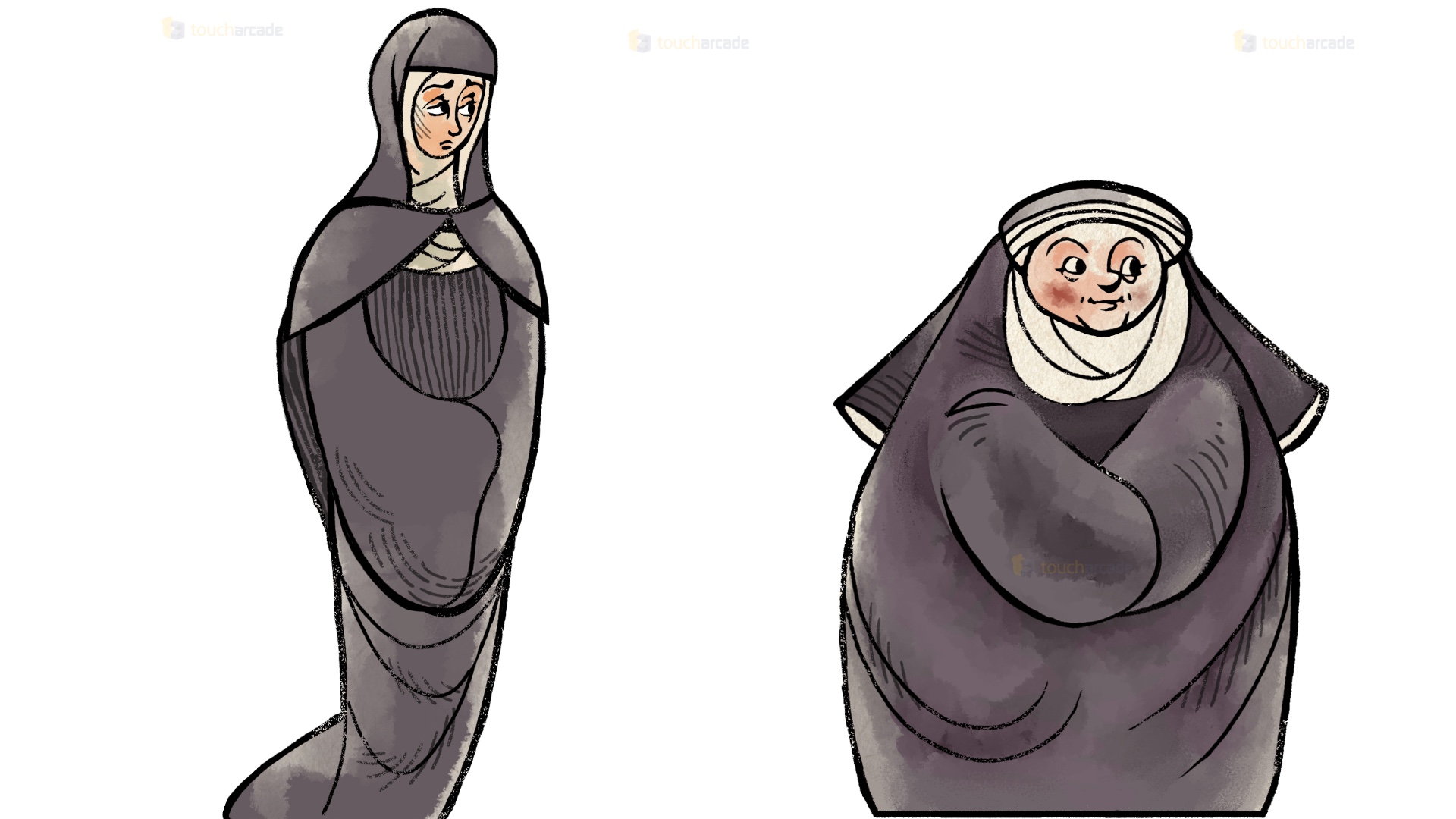
TA: When I played Pentiment on Steam deck, I thought, regardless of it being Steam Deck Verified, that it was the perfect game for the system. I told people to just buy it on Steam and forget about Xbox Game Pass, and just play it on Steam Deck. I also thought about how nice it would be to play on an iPad. I know Microsoft would want people to play it through xCloud streaming on mobile, but do you think a native release for Nintendo Switch or iPad would be possible?
JS: I think it’s possible. I think because of the Steam Deck, a lot of people immediately ask, could this be on Switch? I think that there’s nothing that would prevent it technologically from being on Switch.I would love the game to be on as many platforms as possible, but time will tell.
TA: If you had a chance to work on any single project right now without any budget or time limitations, and you could get whatever team you wanted, would you make Pentiment 2, Pillars of Eternity 3, or Fallout New Vegas 2?
JS: I don’t think I would make Pentiment 2. I really do feel very satisfied with that game. It’s not like I don’t wanna return to it ever, but I just did it, so I’d probably wait a little bit. I think if it truly was an unlimited budget, I think I would try Pillars 3 because I know what the budget was for Deadfire, which was not a whole lot and I have heard from multiple people what the budget was for Baldur’s Gate 3, and I’m not gonna talk about numbers, but if I got that budget, sure, I’ll make Pillars 3.
I think that would be a lot of fun to do, to do like a high production value party based fantasy RPG. I’m pretty happy with Pillars and Deadfire, but I do think that if it were not crowdfunded, I would probably make it turn based. I’m not saying to not have a real time with pause system, but I do think that the Deadfire turn based system which I can’t take credit for, that Nick Carver and Brian MacIntosh, was really cool. But, the game wasn’t designed for it, so actually designing the game for turn based, fewer encounters, smaller encounters, but much more tactical, I think that would be a lot of fun, and having awesome cinematics and all that stuff. That would be great.

TA: I’m glad you mentioned that, because I was gonna ask what you thought about Baldur’s Gate 3. I’m slowly playing through it. I know you are as well. I think you mentioned how Baldur’s Gate 3 ended the real time with pause versus turn based debate. I also wanted to know what you specifically would like to do in your own game if you didn’t have to worry about what the audience wanted.
JS: I’m still concerned about what the audience wants, but I prefer turn based as well. I just think it’s easier to design more intricate combats. I like games with a lot of stats, obviously. (he laughs). But the problem with real time with pause is that it’s honestly very difficult for people to to actually parse all of that information and one of the things I’ve heard a lot from people who’ve played Deadfire in turn based, is that there were things about the game like the affliction and inspiration system that they didn’t really understand very clearly until they played it in turn based. Other mechanics like penetration, they didn’t fully understand until they played it in turn based. So I’m not saying that all those systems are perfect, but I do think like I like doing more crunchy stuff with systems, and that is it’s just easier to make that stuff clear and work in a turn based setting.
So I would do something like that, I’ve said before the camera in BG3 which is essentially the Divinity Original Sin 2 camera. I don’t prefer that because I like designing for a specific perspective.
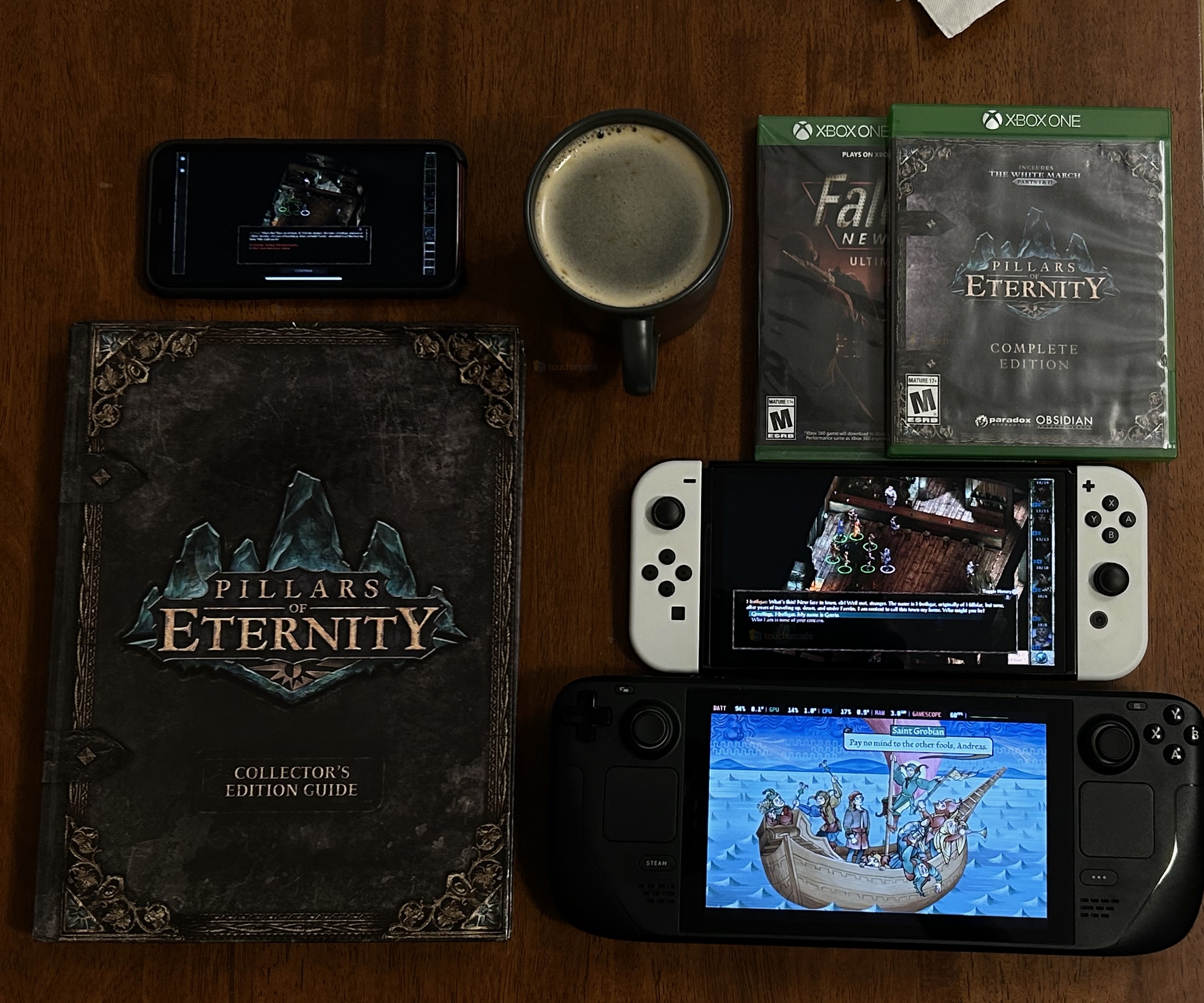
I think you could do that with a scripted camera in 3D. I think that would be super cool. You can do that and it can work and be a lot of fun and. I think that’s that’s the thing. For me, most of the problems I have with BG3 have to do with the interface. It has to do with the camera or the interface and how you manage abilities and click on things and some of that stuff is kind of a headache to me to be honest. I really, at least for Pillars and Deadfire, I tried to keep the interface, given that it’s a very complicated game, I tried to make it as simple to interact with as possible, and I think we did a pretty good job on it, so that would continue to be my focus.
Any time I’m gonna make a game where I know that there’s a lot of complexity in it, I want the complexity to be not in interacting with the interface, but in the mental part of it, not the physical part of it.
TA: Have you played the Icewind Dale Enhanced Edition, and did you play it on mobile or console? If you did, what did you think of the interface?
JS: I played not through the whole thing, but I did play Icewind Dale Enhanced Edition. I actually think I played it on iPad when it came out. I did think that those games were surprisingly playable on an iPad because you’re essentially you can marquee select and you can do all that stuff, and that’s cool. It did introduce a lot of quality of life, stuff that was good, like looting radiuses, and stuff like that.
Most of my issues were were really with how Icewind Dale was designed for D&D without kits, you know, second Edition D&D without kits, so most of the thing that I noticed was when I played it, all of the Baldur’s Gate 2 kits completely annihilated all the balance of the game.
I thought it was fun playing it on the iPad. I wouldn’t say shocked, but I was surprised at how playable it was.
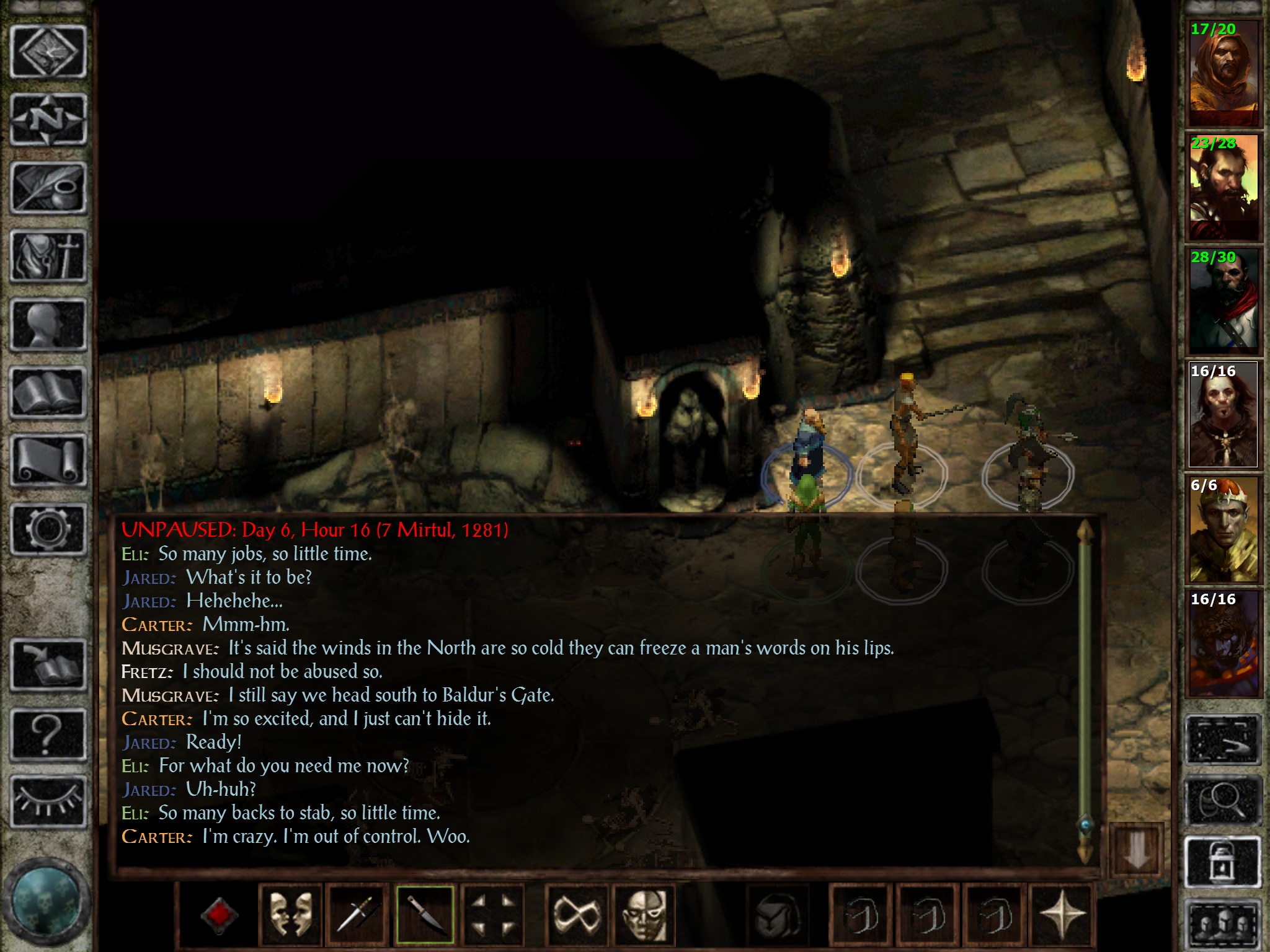
TA: Back to your inspirations for Pentiment, when you posted your shelf of books, I wanted to know what your opinion was on physical versus Kindle for books.
JS: I like both. Certain books I like having on Kindle, especially if I’m traveling, and I have to pack a lot of things. I like having a Kindle. It’s just that I’ve carried too many books around for too long, and it gets to really be a hassle, especially if you’re traveling a bunch. So Kindle, I think is perfect for that, and I like using my Kindle for it. But, I mostly buy physical books. If it’s not something that I know I’m gonna be reading while traveling, I’ll buy a physical book. I’ll usually buy a used physical book. I have a fairly decent library, but then I’ll give them away.
When I came back into the office after a lot of the lockdown stuff ended, I just had so many books. I thought to myself that I had to get rid of them. Even at home, I had all these extra books. I hadn’t looked at any of those in a long time. Other people could benefit from them, so I gave them away.
I like them both. I don’t feel like there’s one that is inherently better. One thing I do like, because I’m fluent in German, but I’m not a native speaker, is if I read things in German, I like the ability to have a dual language dictionary to just immediately look up in the Kindle what the word is, which is still an interruption to the flow, but it’s easier than literally having German English dictionary next to me like to open up, so that’s really cool.
TA: You have three cars right now. What’s your favorite of them?
JS: Ohh it’s probably my 2004 Volkswagen R32.
I bought it new in 2004 and I never really get tired of driving it, and every once in a while it needs maintenance, not actually that much for an almost 20 year old German car, but every once in a while I’m like maybe I should get a new car and then I look around at new cars and don’t want any of them. There’s something about them, either aesthetically or mechanically or electronically, where I don’t wanna deal with that.
I hit a pothole a few weeks ago that broke the oil pan in the car, which was not cool.
And there’s still a stain in the parking garage at Obsidian, which is not cool. But it’s actually been surprising, like most people would not think of like I’m gonna.
I ideally drive a 19 year old German car and it’s super reliable, but mine’s been super reliable. And it’s a lot of fun.
(I asked if he ended up modding it a lot like his first car.)
Not quite as much, so I put an aftermarket exhaust on it and it became incredibly annoying, so I put the stock exhaust back on, but I’ve put coilovers on it, which I just replaced because it’s at 150,000 miles, and I put front and rear sway bars on it, and that’s pretty much it. California has very strict emissions control and it’s not a turbocharged car, so it’s hard to really get a lot of extra power out of the engine without slapping a turbo on it. That would immediately fail emissions.
The thing is it’s plenty quick for me like the only other thing I thought of doing is getting a short shifter. The shifter is really nice on it, but a short shifter I think would be a nice 20th anniversary modification. I did tell myself that if I kept the car for 20 years, I would, I would actually get a repaint on it, like the same color. The roof is really rough. It looks really bad, and there’s like sun damage because I drive it not every day, but I’ve been driving it for almost 20 years now.
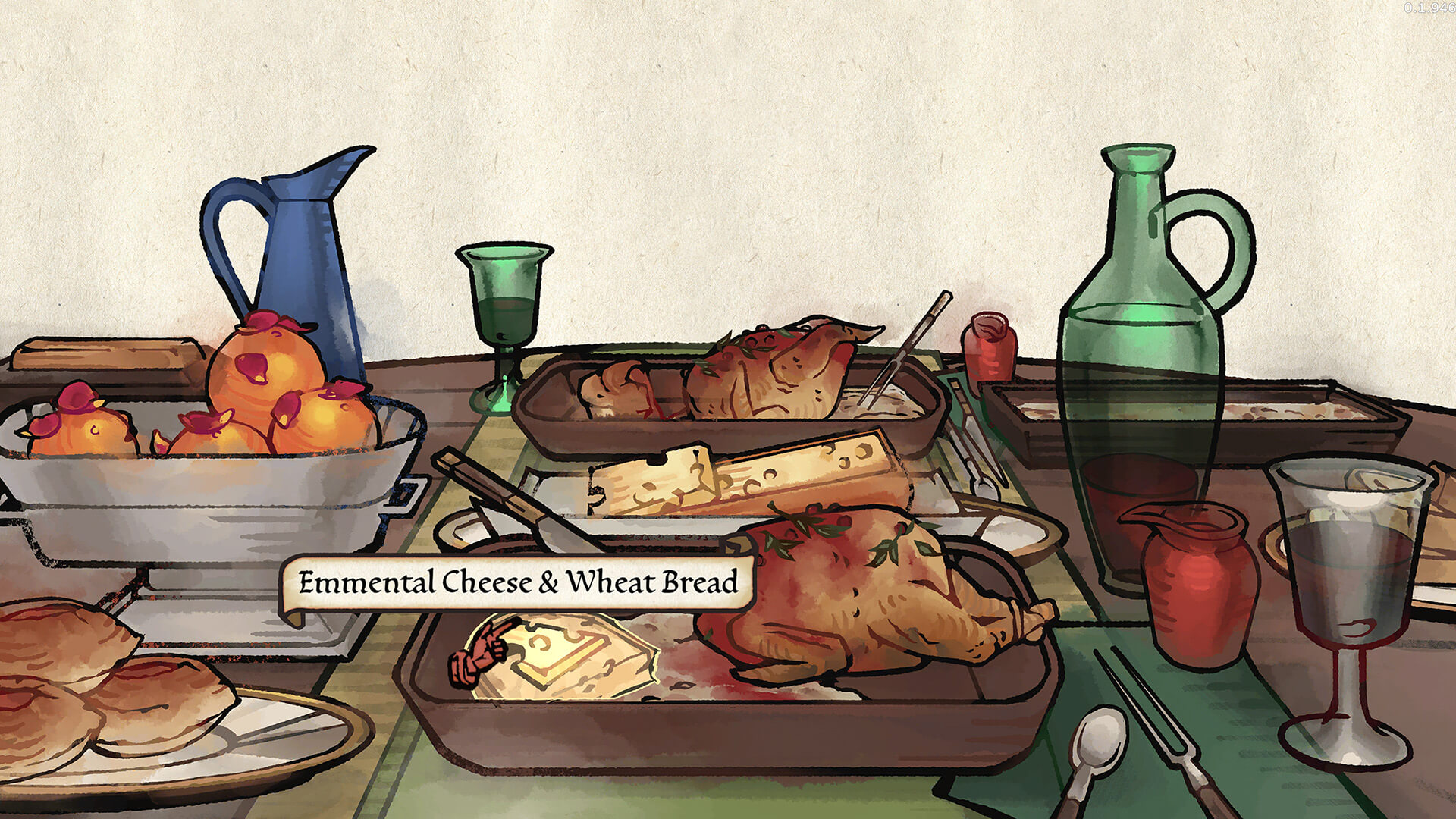
TA: I know you’re not a coffee person, and I usually ask about coffee in interviews so let’s talk cheese. What are your favorite cheeses?
JS: So Red Dragon, which is a Welsh cheddar with mustard, is one of my absolute favorites. I also really like aged cheddars and hard cheddars. Hook’s makes some great 10 year and 15 year cheddar which is expensive, but it’s very very sharp and crumbly, and you can taste the crystals forming in it.
Fromager d’Affinois is a triple cream, which is really, really fantastic. Those are probably my big ones. There’s lots and lots and lots of cheeses that I love. Growing up in Wisconsin, I also love fresh cheese curds, which are difficult to find in California. My family lives about, I think 6 miles, maybe 9 miles away from a creamery where every either Tuesday or Thursday morning, you can just go directly to the creamery and buy fresh cheese curds and fresh cheese curds are so delicious. It’s kind of almost on the level of halloumi, where it’s like that good, it’s just like very salty fresh cheese and it’s like it’s a snack, but it’s just I could eat like a whole bag of that and get sick immediately.
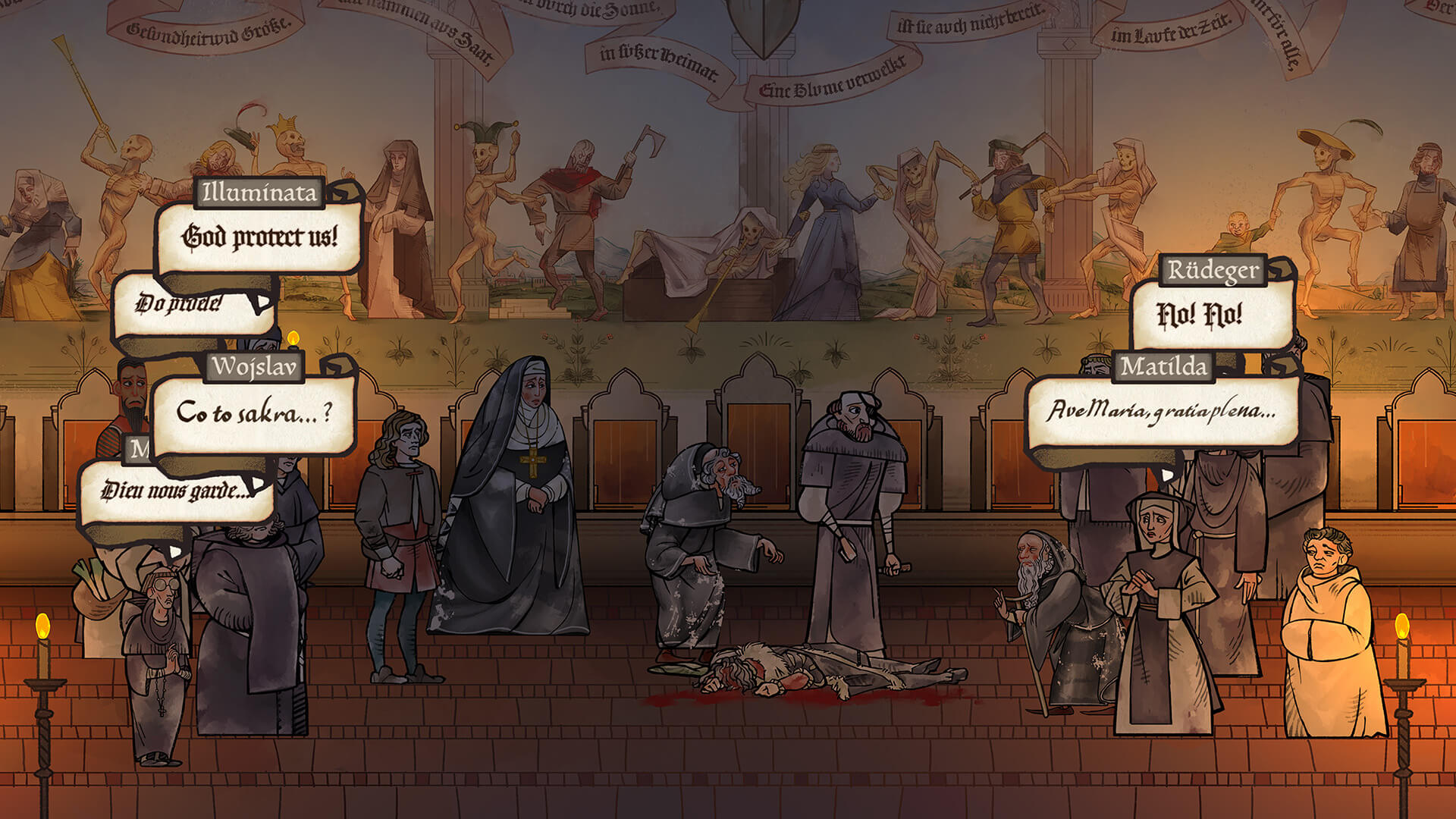
(Editor’s note: the following question has a minor spoiler for act 2 of Pentiment and Act 3 of Kentucky Route Zero)
TA: I wanted to ask a lot about specific games like Kentucky Road Zero and Night in the Woods, and I know you’ve spoken about the latter a lot, but I wanted to know what you thought specifically about the Kentucky Route Zero Act 3 music segment where the song “Too Late to Love You" plays. That specific moment.
JS: I think that the whole game has lots of elements of magical realism, and one of the things that’s very cool about it, and that moment I just thought was very nice because it was such a dramatic transformation in front of your eyes. The fact that you are sort of like picking the lyrics as you go through the song and then she’s singing them. I thought it was very well integrated in a cool way, and it was actually, although this didn’t show up until the patch, but Pentiment in act 2 when brother Rüdeger sings, it was really inspired by that moment in Kentucky Route Zero because brother Rüdeger’s sings and all the monks are stuck in the library, and it starts panning back and everything turns into clouds, where all the monks are and Andreas are now, like literally sitting in clouds in the sky while Rüdeger sings a song. It was that idea of being like this transcendent moment that lifts everyone out of the trouble that they’re in just for the time that he’s singing and then they come back down into the real world.

TA: What have you been playing besides Baldur’s Gate 3?
JS: Cyberpunk 2077: Phantom liberty. I just started playing the 2.0 patch and then Phantom Liberty, and that’s been the main thing I’ve been playing since I got back from Buenos Aires. I need to dive back into it, but I will say the 2.0 changes, I basically universally like all the changes, especially because they align very much with what I said they should have done three years ago. (he laughs) Then Phantom Liberty, I’ve played through about 3 hours of it. I think it’s really great. The tank sequence did drive me a little nuts, but it was very well done, and it seems really cool. So I just need to get into it, spend some more time, but yeah, I’m really enjoying it.
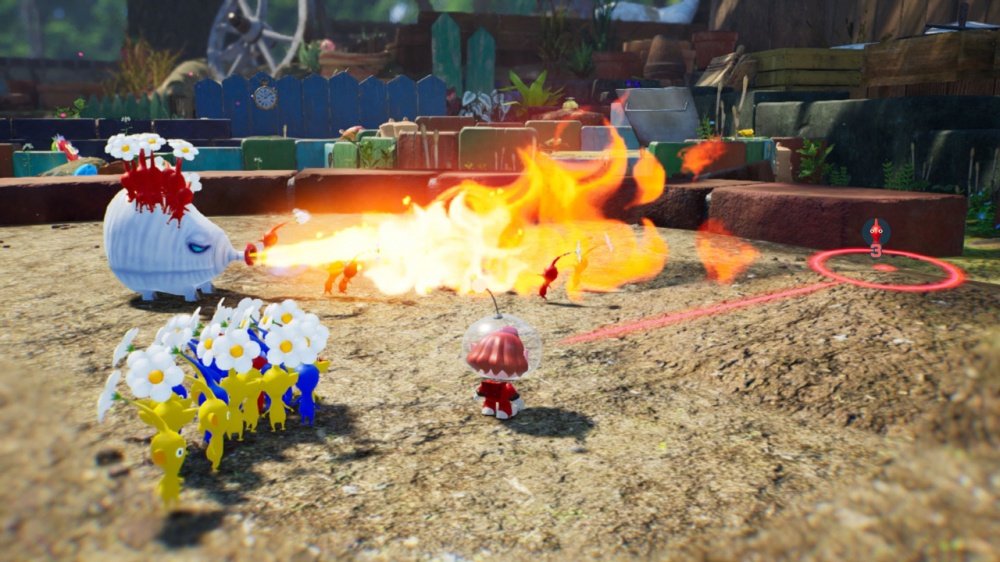
TA: Have you played any Pikmin 4? I know you are a fan.
JS: I did. I only played the amount that I streamed, but I need to get back to it. But yeah, I did have fun with it.
I’d like to thank Josh Sawyer and Shyla Schofield from Obsidian Entertainment for their time here.
Hopefully we do in fact get a physical release for Pentiment alongside an artbook. It would also be nice if that vinyl soundtrack repress goes up for pre-order when I’m awake so I can order it. Until then, if you made it this far, thanks a lot for reading. Hopefully you enjoyed this extended interview with Josh Sawyer of Obsidian Entertainment.


